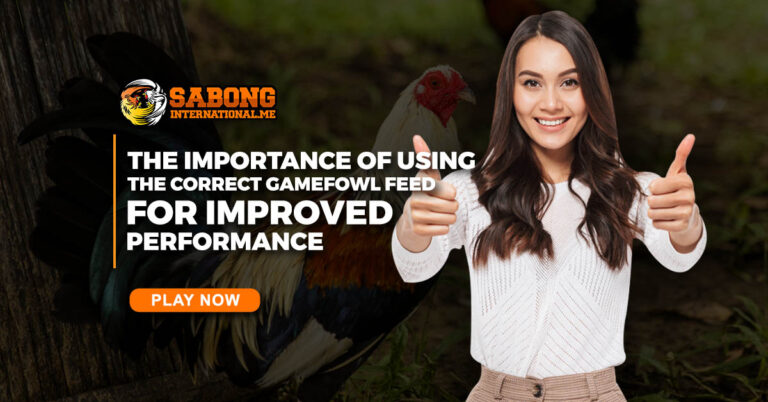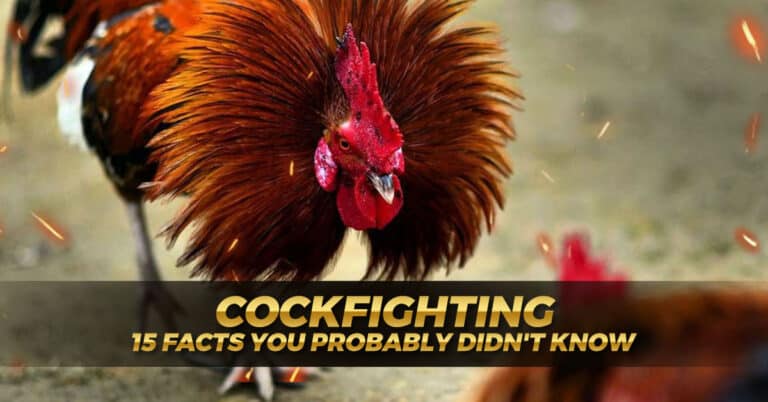Gamefowl Conditioning Expert Guide | Sabong International
What Exactly is Conditioning and Why is it Crucial?
Gamebirds put themselves through extensive training or conditioning before sabong game day, much like our players do. Game Birds are trained for combat from an early age to guarantee that they develop healthily. Healthier gamebirds have an advantage over sickly battle stags in the pit.

Gamebirds are physically and mentally prepared before the conditioning stage through the preconditioning phase. Exercises from the cord, fly pen, and scratch box, sparring, followed by finding time to relax, can be very taxing. The pre-conditioning regimen also includes a high-protein diet, nutritional supplements, and procedures including deworming, delousing, and bacterial flushing.
The Gamefowl Conditioning Program for 21 Days
Although different handlers have varied methods for training gamebirds on the sabong online site, the ultimate objective is to get the birds in the best physical and mental shape possible for the cockfight.

You can use the following 21-day gamefowl conditioning regimen to train your fighting cock to reach its full potential:
1. Selecting the gamefowl that will participate in the program
● A healthy and well-groomed rooster will have reddish shanks.
● A confident gesture is a wagging tail.
● Alert but calm.
● Stretching or Beautifying.
● The body, feet, and toes are at a comfortable temperature.
● A fighting cock that experiences head knocks from mild dehydration is a well-pointed rooster and is prepared for conflict.
● Shiny and silky feathers are a sign that their body is adequately hydrated.
2. Day 1: Worm removal (Pagpupurga)
● On the day before the deworming, avoid feeding the animals in the afternoon.
● Deworming should be done between 4 and 5 AM.
● After administering the medication, re-cage the bird and provide fresh water.
● Check for worms in the feces.
● Between 9 and 10 AM, put them on a soft diet; at 5, resume regular feedings.
3. Day 2: Bacterial flushing
● Flushing with antibiotics when taking Vetracin Gold Capsules.
● Bexan XP Injectable, which has a high concentration of B-complex vitamins, should be injected into the bird to promote optimal muscle growth and better nutrition utilization.
● Use medicinal shampoo to bathe game birds to get rid of dangerous exterior parasites.
4. Day 3: Injectables are administered and rotation day.
● Before commencing the rotation, note the weight of each bird.
● Rotation at the Scratchbox begins at 4 or 5 AM.
● At 7 AM, give the morning meal.
● B-complex injections and amino acids should be given an hour after breakfast.
● At the cording place, let the birds rest.
5. Day 4: First day of sparring and rotation
● As usual, perform rotation.
● Provide them with oral vitamins and electrolytes in their water.
● Allow gamefowl to spar around 4 PM. Record their performance and assign a suitable rating.
● Feed at 5 PM and let the animal relax.
6. Days 5 through 7: Days of rotation
● Rotate as usual.
● Day 5: Offer calcium lactate before perming rotation and give oral supplements following the morning meal.
● On the sixth day, give them multivitamins to strengthen their defenses.
● Day 7: Give them ascorbic acid to help prevent colds.
● Only from 6 to 8 in the morning should gamefowl be allowed to get sun.
7. Day 8: Fasting, second sparring session, and day of the rotation
● Rotate as usual.
● Drinking water with vitamins and electrolytes (AM and PM).
● At roughly 3 PM, start sparring. Keep track of how they performed and assign a suitable rating.
● To get ready for deworming the following day, there is no midday feed.
8. Day 9: delousing, grooming, injectable medication administration, and deworming
● Deworming is advised between 4 and 5 AM.
● Delousing solutions should be applied to gamefowl after the morning feed. After a bath, let them dry out in the sun.
● Injectable B-complex with amino acid.
● A regular meal at 5:00 PM
9. On day 10, rotate and flush the bacteria.
● The regular rotation procedure.
● Water-soluble antibiotics should be reconstituted before being given in the morning and again at noon with a fresh solution.
10. Days 11 through 13: Rotation and second sparring session
● Days 11 and 13: Follow the regular rotation schedule.
● Do sparring at roughly 3 PM on day 12, and keep a scorecard of how well they performed.
● Give them multivitamins to help their immune system.
11. Day 14: Third and final day of sparring
● Give morning feed and let the bird rest.
● Ingesting vitamins and electrolytes in water.
● Perform a sparring session at 3 PM, then rate each participant’s performance. Here is where you select the gamefowl that you will use to combat.
● Give an afternoon meal and a stress reliever.
12. Day 15: Delousing and rotation day
● The regular rotation procedure.
● Give a breakfast meal plus vitamins around 7 a.m.
● After your morning meal, take a long, relaxing bath with a delousing solution. Let the sun dry the items.
13. 3 days before the fight: light workout
● At 7 AM, give the morning meal and vitamins.
● Allow 5 minutes for pakaskas at 3 PM.
● Feed at 5 o’clock and administer a stress reliever.
14. Days 17 and 18: Carbo-loading and maintaining
● At six in the morning, limb the birds, then wash their feet.
● Weigh them and note them.
● Give breakfast.
● One hour after the AM feeding, provide injectable B-complex and amino acids.
● Allow them to limber up and poop around 12 o’clock.
● Feed at 5:00 PM.
15. Keeping and carbo-loading on day 19
● Weight record.
● Give breakfast.
● Allow them to limber up and poop around midday. Talking cocks should be allowed to walk.
● Give a ripe banana at lunch.
● Released outside to urinate at around 4 PM.
16. Day 20 (also known as “sabong day”): Maintaining and carb loading
● Allow to limber up and poop around 6 AM.
● Clean the feet and face of the bird.
● At seven in the morning, feed 20 grams.
● If traveling, give a stress reliever.
● Every one to two hours, let the bird poop.
● Check to check if the bird has to be fed again at the start of the contest.
What does Sapola mean in gamefowl breeding?
Sapola, a slang term from the Philippines, describes the unwell condition of cockfighting roosters who are fed an unbalanced diet, which makes them move slowly.

Sapola can be treated by introducing a hen that a rooster will chase after and rotating the ingredients of the chickens’ feed so that the quantities of protein, carbs, and fats are ideal.
The enlargement of the belly of the Hens and roosters, that’s why we couldn’t use them during breeding. checking of broodcocks and those corded with sapola.
The fowl should check the right nutrition while it’s in the molting period, we need to check if they are getting bigger, or they are having fat gut or Sapola.
How to Prevent Sapola
Feeds during molting should be balanced, it should be 60/40 in the meantime, 60% pellets and 40% speed concentrate, but when it is almost over make 50/50 to increase the fiber. Fowl should move actively after the molting period or it will really get a fat gut.

Hens also need to have perches in the range area and they need to be higher so their leg muscles, pectoral muscles, and wing muscles are all active, so they will be burning fats.
For the fowls or the broodcock molting at the cord, “hapunan” maybe 4-5 feet or even higher. The flight, the balance, the flight timing of our fowls, especially the fighters are much benefitted if the “hapunan” have the best level of high. activity and movement are very in need because while in the molting period and there is no movement or exercise, it will sure nothing happens. And also monthly deworming is needed.
For the molting period, it is good to have vitamin B5, pyridoxine, and B-7 Biotin which will also help together with the thiamin, to melt fowl’s fat. This helps digest the carbohydrates and proteins properly so that they can be utilized by the body.
Any time of the day, there should be a clean source of water, don’t expose it to sunlight, and as much as possible put it under the teepees, so it won’t spoil, it will also avoid respiratory problems, wheeziness, raspiness and colds of the fowls. Prevent at night rodents and frogs from coming in, turn the waterers upside down or put them at the side
Make sure to maintain cleanliness in the farms, the maintenance of the fowl’s health relies on this.










